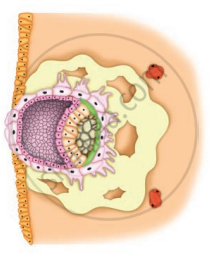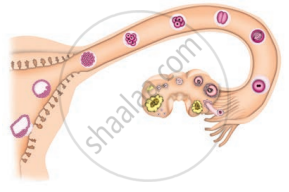Advertisements
Advertisements
प्रश्न
In the list of animals given below, hen is the odd one out.
| human being | cow | dog | hen |
The reason for this is
विकल्प
it undergoes internal fertilisation
it is oviparous
it is viviparous
it undergoes external fertilisation
उत्तर
it is oviparous
Explanation -
Hen is odd one out because it is oviparous, i.e. it lays egg from which young ones are hatched later on.
The rest three (human being, cow and dog) are viviparous, i.e. give birth to young ones after they are fully developed.
APPEARS IN
संबंधित प्रश्न
What do you mean by DNA?
Draw a diagram of DNA showing genes.
How does the amount of DNA remain constant though each new generation is a combination of DNA copies of two individuals?
Why is variation beneficial to the species but not necessarily for the individual?
Egg laid after fertilisation is made up of a single cell.
Name two animals which reproduce asexually.
What is a clone? Why do offsprings formed by asexual reproduction exhibit remarkable similarity?
Why is variation during reproduction beneficial to the species but not necessarily for the individual?
Reproduction is essential for living organisms in order to ______
In asexual reproduction, two offsprings having the same genetic material and the same body features are called :
(a) callus
(b) twins
(c) clones
(d) chromosomes
Differentiate between the following:
Asexual reproduction and sexual reproduction.
Self-incompatibility is found in flowers of plants _______.
______ is an example of helobial endosperm.
The average period of pregnancy in human lasts for ______ days of pregnancy.
Planaria reproduces asexually by ______.
Which of the following is diploid at the time of fertilization in a gametophyte of a normal angiosperm?
Assertion and Reason types of Question.
Assertion: In Banyan prop roots grow horizontally from the tree.
Reason: They give additional support to the tree.
Observe the following figures.
 |
 |
 |
|
| (a) | (b) | (c) | (d) |
- Identify the stages (a) to (d) in figure during development of human baby.
- Arrange the stages in correct sequence of development.
- Explain the development that takes place in any one stage.
Define the following term:
Reproduction

